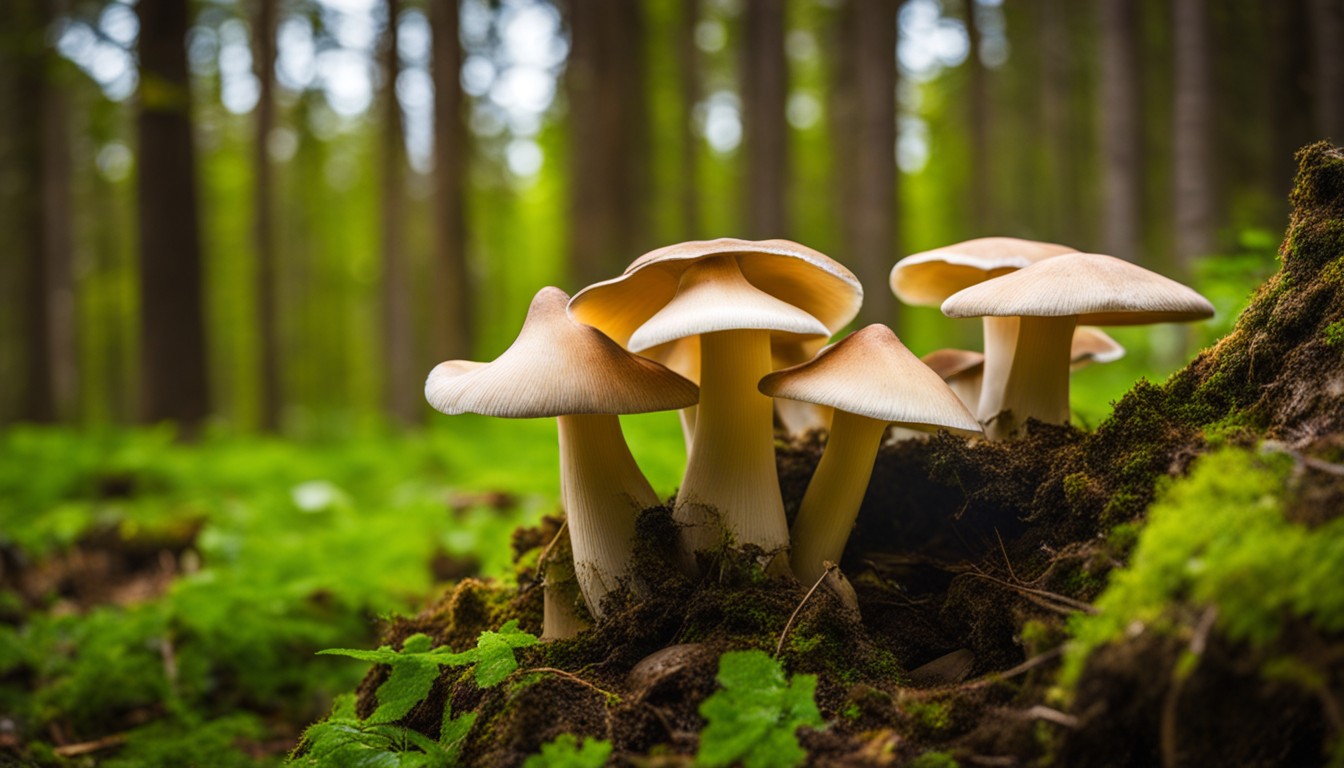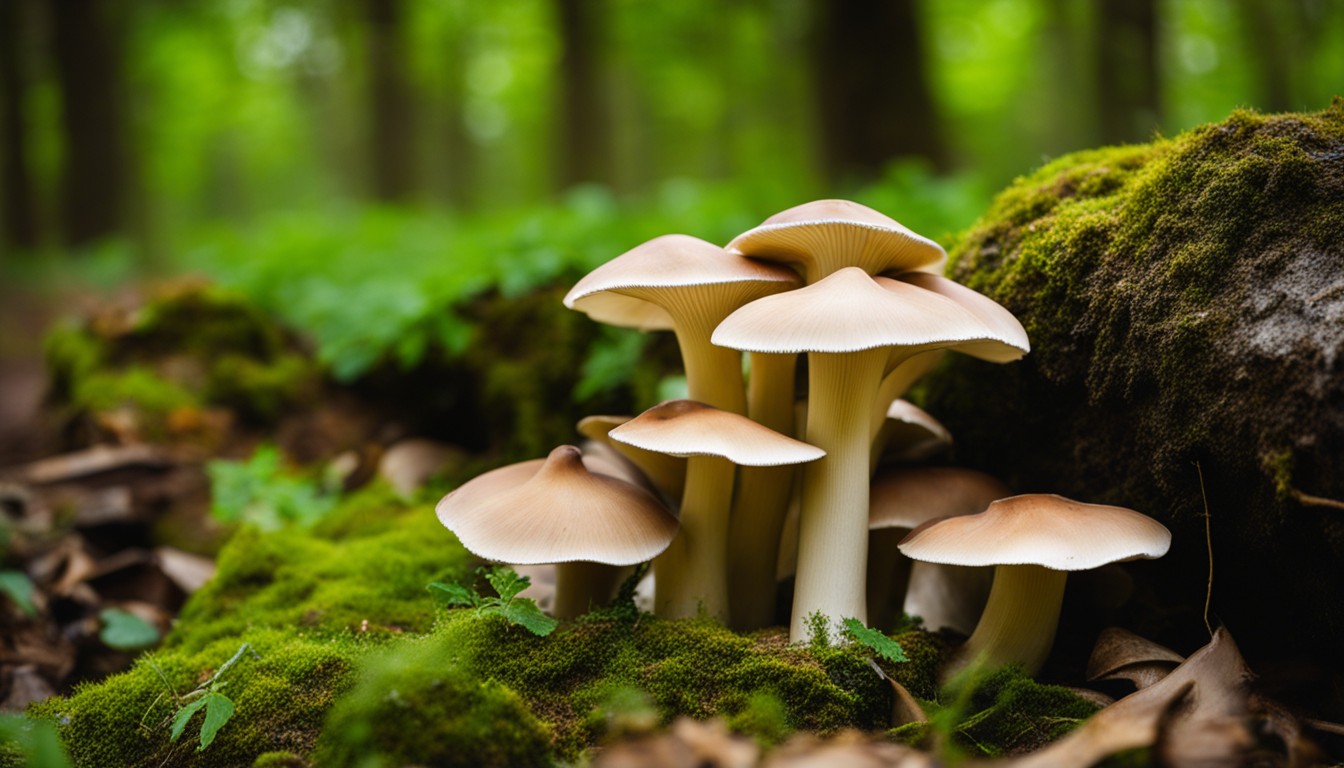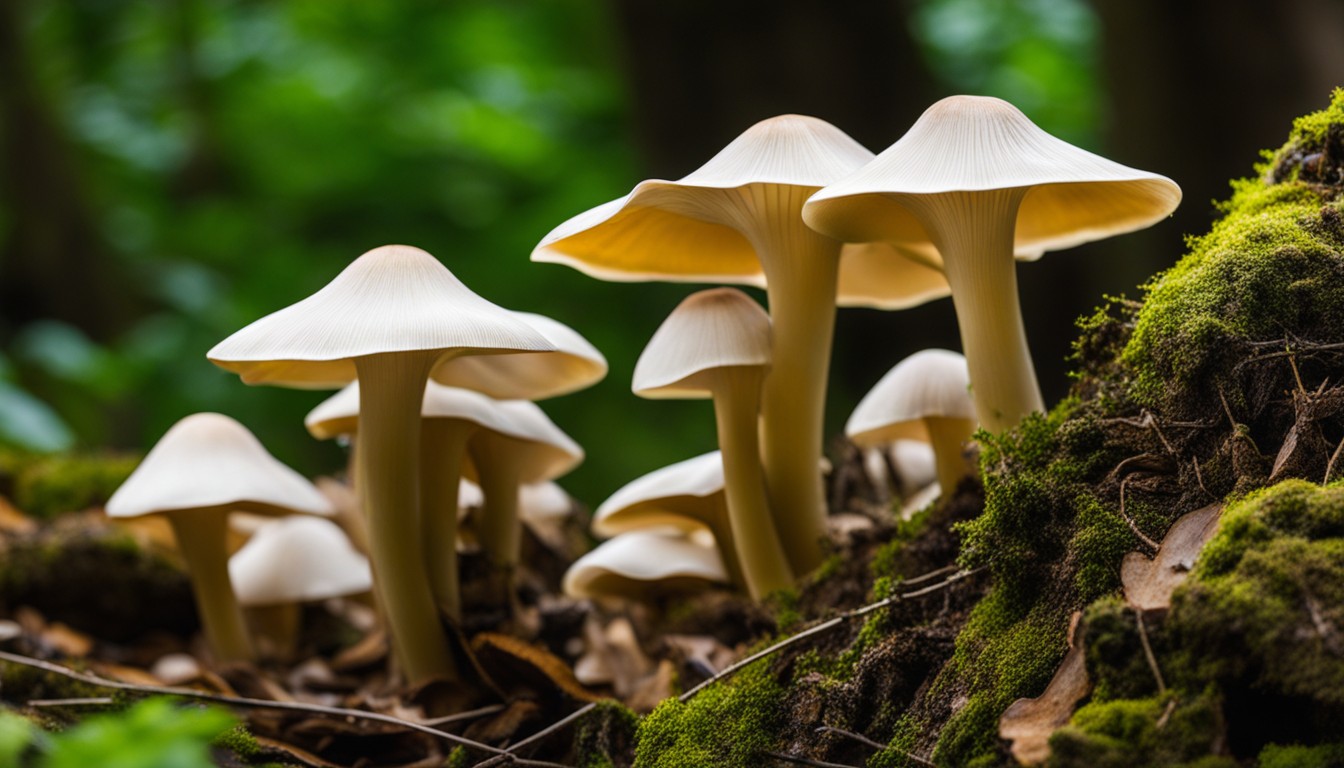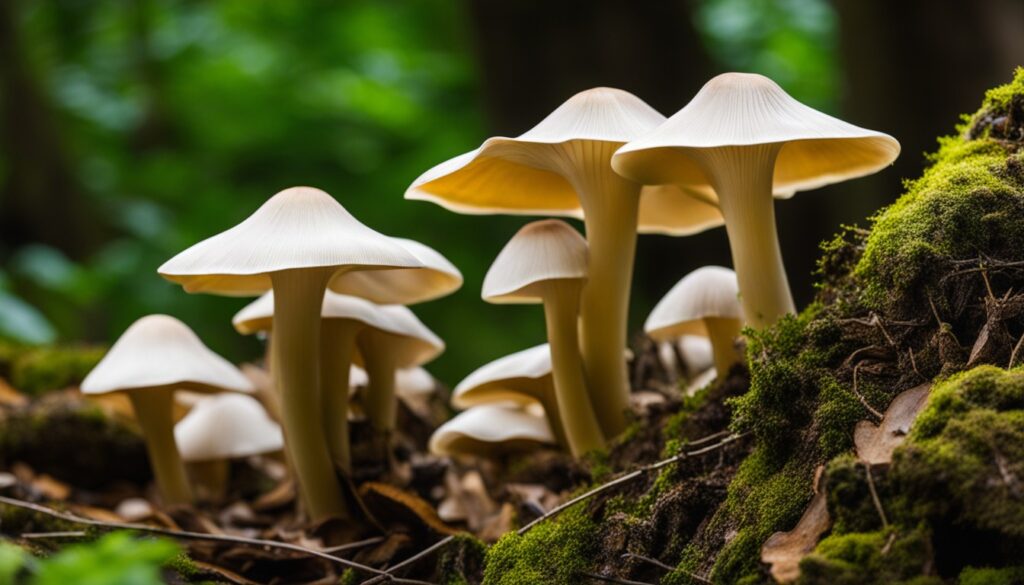Mushrooms of Connecticut: A Guide to Local Fungi is a must-read for nature lovers and mycology enthusiasts in the state. This in-depth blog post offers a comprehensive exploration of the diverse mushroom species that can be found in Connecticut, showcasing their unique characteristics and ecological significance. From the strikingly beautiful Amanita species to the elusive and highly sought-after morels, this guide leaves no stone unturned when it comes to providing valuable insights for mushroom identification and appreciation. Whether you’re interested in foraging for culinary delights, studying the relationships between fungi and the environment, or simply marveling at the intricate forms of these organisms, this guide serves as a trusted companion on your mycological journey. So lace up your boots, grab a basket, and embark on an adventure to uncover the hidden treasures of the mushroom kingdom right in your own backyard.
Understanding Fungi
Fungi, in their myriad forms, are extraordinary organisms, bending the rules of usual plant and animal classifications. They are unique in their own right: heterotrophic decomposers that sustain their existence by absorbing nutrients from organic material.
Fungi, exceptional heterotrophic decomposers, enrich the environment’s fertility and supply medicinal organic compounds through their unique biochemical manufacturing abilities.
Permeating ecosystems worldwide, fungi act as the environment’s housekeepers and pharmacists. Their symbiotic relationships with plants enhance soil fertility, while their biochemical manufacturing capabilities result in diverse organic compounds, some of which have medicinal properties.
What are Fungi?
Fungi are among the most intriguing entities on the planet, neither plant nor animal, yet boasting qualities from both kingdoms. They include organisms like yeasts, molds, and, of course, mushrooms, which are just the tip of the iceberg in the vast fungal world. These organisms are complex, captivating, and diverse.
Despite being ubiquitous, fungi remain largely mysterious. One defining characteristic is their heterotrophic nature, implying they feed on organic material instead of producing food through photosynthesis like plants. Their unique cell structure with a chitinous cell wall sets them apart from plants and animals both.
Unlike plants, fungi cannot derive energy from the sun. They obtain nourishment by decomposing dead matter or symbiotically associating with other organisms, termed as mutualism. Thus, they play a vital role in nutrient cycling in ecosystems, catalyzing crucial biogeochemical processes.
Fungi create vast networks below the ground, connecting different organisms and helping exchange nutrients. This feature, termed mycelium, is a distinguishing aspect of fungi. The mushrooms, admired for their culinary value, are merely the fruiting bodies arising from this unseen, subterranean network.
Importance of Fungi in Ecosystems
Fungi indeed merit more attention and appreciation. As vital ecological allies, they maintain the health of our ecosystem by cycling nutrients and breaking down organic materials.
Contributing to decomposition and nutrient distribution, fungi play a crucial role in ecosystem stability. Their interactions with soil and plants aid in creating rich, fertile landscapes suitable for diverse flora and fauna.
Fungi Classification
Scientific classification of fungi is meticulously developed, sorting these unique organisms into a complex hierarchy based on their physical and genetic characteristics. Employing species, genus, family, order, class, phylum, and kingdom, the intricate categorization of fungi is a testament to the depth of mycological studies.
Understanding fungi classification can seem overwhelming given its complex nature. However, a comprehensive guide can simplify the process. It boils down to key features – cell structures, methods of sporing, and growth habits that help place a fungus in the correct taxonomic rank.
The largest grouping in the fungi kingdom is called a phylum. The well-known phylum, Basidiomycota, includes the majority of mushrooms that are familiar to us. Other significant phyla include Ascomycota, which presents truffles and morels, and the Zygomycota that contains bread molds.
Delving deeper into the classification, we reach the level of species. Species identification can be quite tricky given the sheer diversity and sometimes subtle differences that exist between different fungal species. DNA sequencing plays an integral role at this level, providing definitive identification.
Investing time in understanding the fungi classification not only enhances our knowledge of these fascinating organisms but also aids in identification. With a better grasp on this comprehensive guide, mushroom hunting in Connecticut can become an even more enriching experience.
Mushrooms in Connecticut
Connecticut’s mycological landscape offers a diverse array of fungi, inviting exploration and discovery. From magnificent mantle mushroom clusters in forested areas to solitary morels hidden in deciduous woodlands, the state’s fungal flora exemplifies the wide array present in nature.
The State’s rich woodlands are also abundant with edible fungi – a treasure for culinary enthusiasts. Notable varieties include Chanterelles known for their vibrant color and earthy flavor or Morchella with their unique honeycomb-like appearance. These edible fungi bring a world of flavor, elevating Connecticut’s local cuisine.
Variety of Mushrooms in Connecticut
Known for its rich biodiversity, Connecticut boasts an impressive range of mushrooms, from the common to the rarest species, revealing a colorful mycological spectrum that unfolds across different seasons.
- The creamy Morel (Morchella esculenta), a springtime bounty.
- The ubiquitous Field Mushroom (Agaricus campestris), a summer favorite.
- The delicate Chanterelle (Cantharellus cibarius), found in hardwood forests.
- The unique Glow in the Dark Mushroom (Armillaria mellea), lighting up autumn nights.
- The rosy-capped Rosy Russula (Russula rosea), a vivid display of color.
Popular Edible Mushrooms
Among the rich diversity of forest flora in Connecticut, certain edible mushrooms stand out for their distinctive flavors and sturdy textures, making them a gourmet forager’s delight.
- Black Trumpet (Craterellus cornucopioides): Known for their rich, smoky flavor, these are among the most sought-after edible mushrooms in Connecticut.
- Hen of the Woods (Grifola frondosa): Bursting with earthy, aromatic notes, these often grow at the base of oak trees.
- Morel (Morchella): Distinguished by their honeycomb-like appearance, these fungi offer a rich, nutty flavor.
- Chanterelle (Cantharellus cibarius): These yellow fungi are valued for their apricot-like aroma and mild, peppery taste.
- Lion’s Mane (Hericium erinaceus): Favored for its seafood-like texture and taste, it’s often used as a meat substitute in vegetarian dishes.
Toxic and Non-edible Mushrooms
Connecticut is home to numerous mushroom species, some of which can be harmful if ingested. Understanding these toxic and non-edible varieties can be lifesaving for mushroom hunters and foragers.
- Some prevalent toxic mushrooms in Connecticut include Amanita bisporigera also known as ‘Destroying Angel’, Galerina marginata known as ‘Deadly Galerina’, and Lepiota species like ‘Deadly Parasol’.
- Inedible varieties, although not lethal, can cause gastrointestinal issues. These include species like Boletus sensibilis and Scleroderma citrinum.
Endangered Mushrooms in Connecticut
In Connecticut, several mushroom species find their survival under serious threat due to factors such as habitat destruction, pollution, and climate change. As a result, concerted efforts are being made to protect and preserve these unique and often overlooked components of the state’s biodiversity.
- Eastern North American Russula species: These are red, white, or purple in color, and are mostly found in hardwood forests.
- Other Russula species: Primarily occurring in coniferous forests, these are under threat due to habitat loss.
- Cantharellus species: More commonly known as chanterelles, they are at risk due to over-harvesting and habitat degradation.
- Amanita species: Known for their distinctive cap and stem structure, numerous species of the Amanita genus are under threat in Connecticut.
Identifying Local Fungi

Diving into the practice of fungi field identification helps you decode unique mushroom signatures. Having a firm grasp of this process is particularly beneficial when exploring the diverse mycological scene in Connecticut, providing you a more immersive and educational nature experience.
Demystifying mushroom morphology is your next step. Understanding the various forms, colors, and structures endemic to your local Connecticut fungi greatly advances your identification skills. This depth of knowledge fuels a deeper appreciation of mushrooms and their fascinating contributions to our ecosystem.
Mushroom Anatomy
Mushrooms, also known as the fruiting bodies of fungi, have intricate structures. Their anatomy consists of a cap, gills or pores, and a stem. Local Connecticut varieties share these features, yet display a unique range of colors, shapes, and sizes.
The cap, also known as the pileus, both protects the rest of the mushroom and aids in spore dispersal. While its exterior shape and texture are important identifying markers, its color can be deceptive, as it often changes throughout the mushroom’s lifespan.
Underneath the cap, you’ll find gills or pores. Gills are thin, closely spaced tissues from which spores are bron and dispersed. Pores exhibit a similar function but differ structurally; instead of gills, mushrooms with pores have tiny funnels underneath their caps.
The stem, or the stipe, provides support as mushrooms sprout from their substrate. Some mushrooms have a unique ring, or annulus, around their stem. This rings remnants of a protective fluid called veil, which covered the gills or pores during early growth stages.
Finally, some notable Connecticut mushrooms, such as some Boletes and Morels, exhibit a sponge-like structure instead of gills or pores. These unique characteristics deepen the identification knowledge required for successful Connecticut fungi foraging.
Using Field Guides
Leveraging field guides can prove indispensable when navigating Connecticut’s rich mycological flora, particularly during unpredictable weather conditions. These comprehensive manuals offer in-depth information on mushroom species, habitats, and ideal growth conditions.
Field guides, specifically those relevant to Connecticut, can significantly enhance your mushroom hunting experience. They aid in decoding complex mycological terminologies, identifying features, and discerning between similar-looking species, thus increasing both the efficiency and success of your hunt.
Characteristics for Identification
Methods to identify common and rare mushroom species in Connecticut require a focused eye on unique characteristics. Spore color, gill attachment, stem shape, and season of growth form part of this comprehensive analysis.
Cultivating a deep understanding of essential mushroom characteristics bridges the gap towards their effective identification. By studying the cap’s form, texture, and color, as well as noting the hyphae structure, mushroom enthusiasts can discern species with greater accuracy in Connecticut.
Key Features to Look for
Focusing on the Connecticut’s diverse fungal landscape, understanding key features such as cap shape, spore color, gills, stem characteristics and habitat can greatly aid in mushroom identification.
Differentiate between parasol-shaped caps indicative of Shaggy Mane, and flat caps seen in Black Trumpet mushrooms. Observing these subtle differences can help distinguish one species from another.
Varying shades of spore prints pose as another identifying feature. The milky spore print of the Giant Puffball compares contrastingly with the brown spore print of the Hen of the Woods.
Note the presence or absence of a ring on the stem – a common detail in many mushrooms like the Amanita species. Similarly, a bulbous base is an important attribute in some others.
Finally, habitat plays a significant role. While Maitake tends to grow at the base of hardwoods, Chicken of the Woods prefers oak and cherry trees. Paying attention to these nuances can lead to a successful mushroom hunt.
Mushroom Hunting Tips

When embarking on a mushroom hunt in Connecticut’s wilderness, it is crucial to understand the importance of seasonality. Fungal abundance tends to peak in warmer, wetter months, making late spring through fall the best times to embark on a mushroom expedition.
Equipping oneself with the right tools – a basket for collection, a knife for clean cuttings, and a field guide for identification – has paramount importance while mushroom hunting. Practicing proper foraging etiquette and focusing on conservation can ensure the sustainability of Connecticut’s fungal population.
Personal safety while hunting is non-negotiable. Steer clear of easily confused toxic species and, when in doubt, leave the specimen behind. Avoid trespassing; private property or protected areas are off limits unless explicit permission has been gained.
Best Locations and Seasons
Connecticut provides diverse biomes that host an array of fungi species. Hotspots for mushroom foraging include Bear Mountain, Pine Mountain, and Ragged Mountain, all flush with fungal fruiting bodies during the foraging seasons.
Mushrooms flourish in damp environments, and Connecticut’s moisture-abundant settings, particularly after the rain, make it a fungi haven. Especially fruitful are the parks rich in broadleaf trees which are proven allies of various mushroom species.
The cycle of fungi is directly influenced by seasonal changes. In Connecticut, many species sprout in late summer to early fall, a time when heat and moisture reach peak levels, enabling optimal mushroom growth.
Spring mushrooms are less common, but morel is an exception. Revered by foragers, it appears in April and May near decaying wood and under certain trees. Its unique honeycomb cap is a sure identifier.
However, remember that national parks and reservoirs are protected areas where foraging may be restricted. It is, therefore, of utmost importance to respect all guidelines and restrictions in the pursuit of local fungi.
Tools and Equipment
Equipping yourself with the right tools is essential. A basic mushroom foraging kit should include a basket for collecting mushrooms, a handy field guide for identification, and a knife for clean cuts. You may also want to bring along a notebook to jot down observations.
Investing in durable equipment pays off in the long run. Purchase a sturdy basket that can withstand rough woodland terrains, and opt for a sharp, high-quality knife. Ensure your field guide has waterproof pages – it’s all part of being ready for any weather.
Don’t forget the importance of comfortable clothing and boots that can handle long walks in the woods. A hat or cap enhances your visibility while enhancing protection. You may also consider a hand lens or magnifying glass for up-close examinations of the fungi specimen.
Safety Precautions
Treading softly while mushroom hunting in Connecticut is key. Besides practicing minimal disturbance, it is critical to avoid consumption of any unidentified mushroom, a safety precaution that helps prevent fungicide poisoning.
Foraging for mushrooms can be a treacherous task without appropriate knowledge. Having a clear understanding of the region’s local toxic varieties significantly lowers the potential risks and fosters a safer hunting experience.
Proper attire plays a crucial role in mushroom hunting. Consider wearing long pants and closed-toe shoes to protect against ticks and poison ivy, common threats in Connecticut’s wooded areas.
In the realm of mushroom identification, ‘when in doubt, throw it out’ is a mantra to live by. Even skilled mycologists may misidentify species, thus consuming an unidentified mushroom simply isn’t worth the health risk.
Lastly, never consume wild mushrooms raw. Some harmless-looking mushrooms contain harmful toxins that are neutralized with cooking. As a safety measure, always cook Connecticut mushrooms thoroughly before consumption.
Etiquette and Conservation
While mushroom hunting, it’s vital to follow robust ethics and etiquette. This entails responsible harvesting practices: taking only what you need, leaving young fungi to mature, and not disturbing the habitat, ensuring continued growth for future collectors.
Care must be taken not to compromise the soil structure where fungi thrive. Disturbed soil could mean disrupting not only the visible mushrooms but also the intricate mycelium network below – the lifeblood of fungi.
Foragers in Connecticut are strongly encouraged to foster fungi conservation. Endangered or rare mushroom varieties should never be harvested. Instead, documenting their location assists in scientific studies and conservation efforts.
A substantial part of mushroom hunting etiquette is sharing knowledge with the community. By educating others about ethical foraging and the importance of fungi in the ecosystem, you’re contributing significantly to their preservation for future generations.
Cooking with Connecticut Mushrooms

In the culinary world, connecting with nature through foraging has always been rewarding. Connecticut’s diverse array of fungi can be transformed into hearty stews, delectable sauces, or even as a healthier alternative to meat in various intricate dishes. The key, however, lies in properly preparing and cooking these mushrooms to extract their unique flavors and nutrients.
Unlock the culinary potential of local Connecticut mushrooms by understanding the basics of mushroom preparation and cooking. Be it sautéed, grilled, roasted, or used in soups, the right techniques can enhance their earthy, umami-rich flavors and textures. Remember to always adequately clean these forest-found treasures and never consume them raw to avoid potential digestive issues.
Preservation methods such as drying, freezing, or pickling can help extend the shelf life of your mushroom haul, allowing you to enjoy the flavors of Connecticut mushrooms throughout the year. While preparing these wild fungi, ensure to discard any parts that seem tough or have a suspicious texture, to maintain the quality of your dishes.
Delicious Recipes
Savory Sensations brings you a collection of gourmet mushroom recipes that celebrate the unique and varied tastes of Connecticut’s local fungi. Let’s turn those foraged finds into fabulous dishes that impress and delight.
- A rustic mushroom risotto featuring the earthy flavors of Chanterelles or Porcinis.
- A hearty wild mushroom soup with a mix of morels and puffballs.
- A wild mushroom tart showcasing the delicate taste of Fairy Ring mushrooms.
- Stir-fried Maitake mushrooms with garlic and thyme.
- Sauteed Oyster mushrooms served on crusty sourdough bread.
- Baked Shaggy Mane mushrooms with spices and olive oil.
- A forest pizza topped with a medley of Connecticut’s wild mushrooms.
Cooking Tips
When cooking with mushrooms from Connecticut, the expertise shared by local chefs in their creation of mushroom-based meals significantly contributes to the culinary delights. The art of cooking with these fungi necessitates understanding their unique flavors and textures.
- Master the mushroom’s unique texture: Avoid overcooking to maintain the mushroom’s firm texture.
- Bring out the flavors: Sauté mushrooms in butter or olive oil to release their natural flavors.
- Pairing: Complement the dishes with the right wine or herbs to enhance the mushroom’s flavor.
- Clean with care: To preserve their earthy flavor, wipe mushrooms clean with a damp paper towel instead of washing them.
- Cook at the right temperature: Every variety requires a different temperature and time for cooking.
Preserving Mushrooms
Nature’s true bounty emerges in the form of mushrooms, a cornucopia of flavors and textures found in Connecticut’s backwoods and fields. Proper storage and preservation not only prolong their freshness but also retain their unique characteristics. It’s a vital part of enjoying nature’s edible gift.
Caught in a dance between science and art, the preservation of mushrooms staves off spoilage and extends their culinary use. Different methods suit different species, be it drying, freezing, pickling, or canning. Each method is an immersion into the storied tradition of mushroom foraging.
Drying is one of the most common preservation methods for mushrooms. This method helps retain the flavor and nutrient content of the mushrooms, offering a long-lasting supply for your culinary adventures. Be it shiitake or porcini, learning the proper drying technique is key.
Freezing also provides a handy way of preserving mushrooms, but it requires blanching beforehand to maintain their texture. Similarly, pickling and canning require a deep understanding of pH, temperature, and time to prevent bacterial growth – yet the result is worth the effort.
Tagging along the recommended procedures can ensure the longevity of your Connecticut’s foraged mushroom’s flavor. In this endeavor, wearing the hats of mushroom identifier, forager, and preserver allows you to experience fungi in its full richness.
Health Benefits of Mushrooms
Exploring the nutritive profiles of Connecticut’s popular edible mushrooms reveal a veritable powerhouse of health benefits. Rich in nutrients like vitamin D, selenium, and dietary fiber, these mushrooms also possess antioxidant properties, aiding in overall well-being.
Harvesting wild mushrooms in Connecticut not only opens the door to an adventurous culinary journey, but it also unveils secret health advantages. The indigenous fungi often contain unique bioactive compounds, boosting immune function and potentially offering protective effects against certain diseases.
Frequently Asked Questions about Mushrooms of Connecticut
What is the ecological importance of mushrooms in Connecticut?
Mushrooms play a vital role in Connecticut’s ecosystems by facilitating nutrient cycling, promoting soil health, and forming symbiotic relationships with plants.
What types of mushrooms can be found in Connecticut?
Connecticut is home to a diverse array of mushroom species, including morels, chanterelles, oyster mushrooms, and various species of Agaricus and Amanita.
How can I identify mushrooms in Connecticut?
To identify mushrooms, carefully observe characteristics such as color, shape, gills or pores, and presence of a ring or volva. Consult reliable field guides or seek guidance from experienced mycologists for accurate identification.
Are there any poisonous mushrooms in Connecticut?
Yes, Connecticut is home to poisonous mushrooms, such as the deadly destroying angel (Amanita bisporigera) and the toxic false morel (Gyromitra spp.). It is crucial to exercise caution and never consume wild mushrooms without proper identification.
Can I forage for mushrooms in Connecticut?
Yes, you can forage for mushrooms in Connecticut, but it is important to follow ethical practices, obtain necessary permits if required, and ensure proper identification before consuming any wild mushrooms.
Are there culinary uses for mushrooms found in Connecticut?
Certainly! Many of the edible mushroom species found in Connecticut are sought after for their unique flavors and can be used in various culinary creations, from savory dishes to sauces and soups.
Conclusion
In encapsulating the rich world of Connecticut’s mushrooms, it’s crucial to recognize the diversity and significance of local fungi. The variety in characteristics, taste profiles, and uses for cooking presents a world beneath our feet that might seem foreign, yet is integral to our ecosystem.
- A thriving biodiversity of fungoid flora.
- Array of edible and non-edible mushrooms.
- Effective identification techniques.
- Tips for mushroom hunting.
- Culinary uses of local mushrooms.

